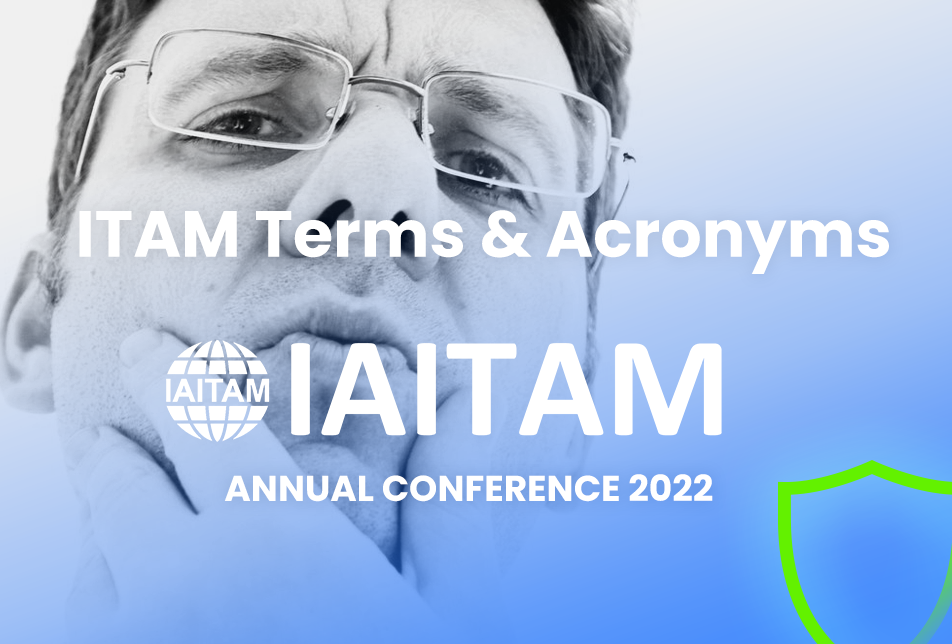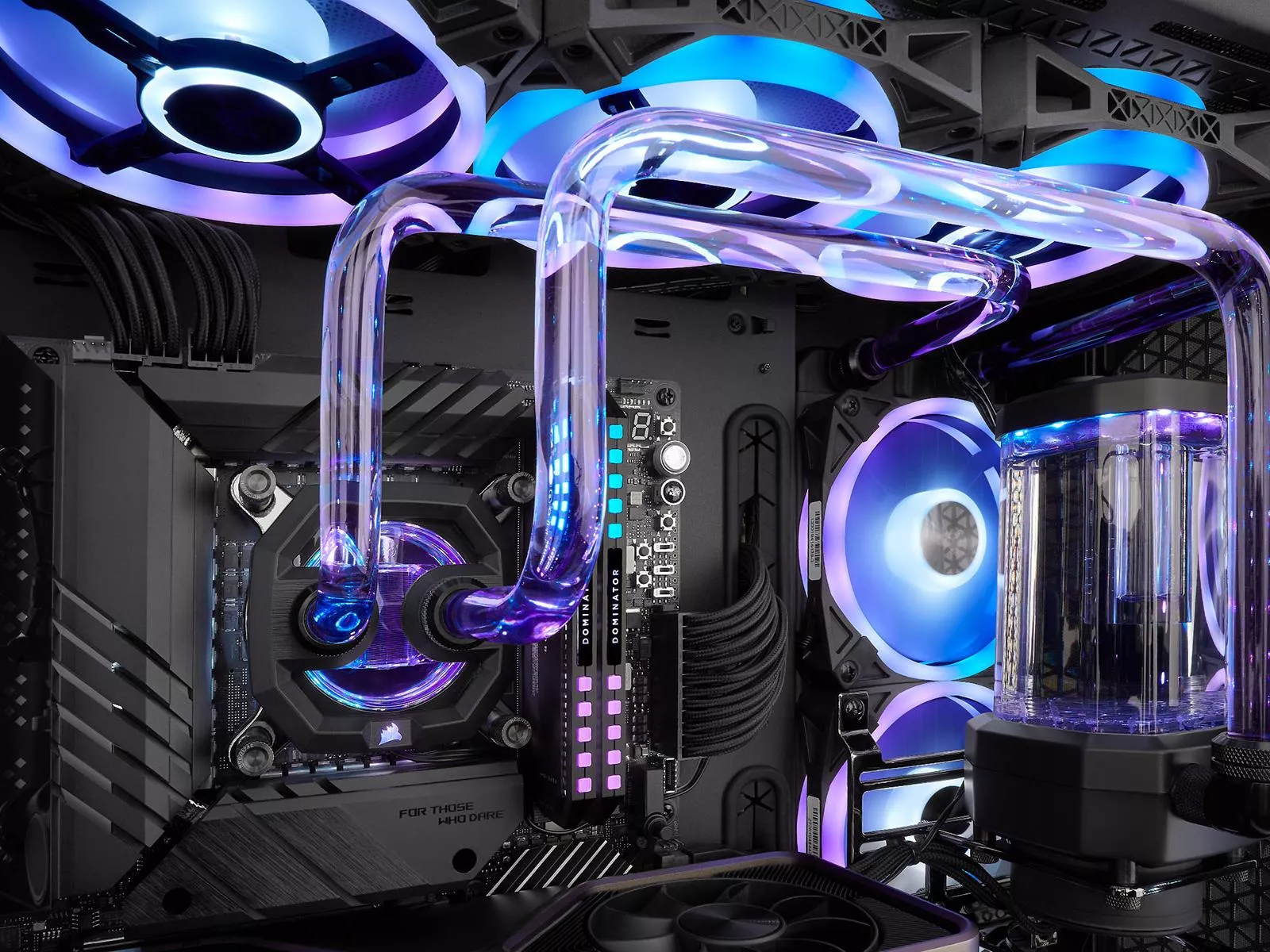A guide to Data Bearing Devices/Assets. Download your free copy here >
Guide: Information Technology Asset Management (ITAM) Industry Acronyms, Abbreviations, Jargon and Terms

As IT infrastructure becomes more complex, it’s only natural that the supporting language does too. At IAITAM ACE 2022, “ITAM was, by far, the most prevalent acronym used. But, ITAM was just the tip of the multi-letter, often slightly different acronym mountain heard in sessions, discussions and in the exhibit hall.
If you were confused or were wishing for a handy guide to decipher the “inside baseball” language of information technology asset management, wait no more!
This is our first of three guides to ITAM language, acronyms, jargon and abbreviations (with application to the ITAM market) as pulled from the IAITAM conference but used universally within the ITAM/ITAD space:
- Guide 1: Industry Abbreviations, Acronyms, Jargon and Terms
- Guide 2: Agencies and Industry Organizations cited at IAITAM
- Guide 3: Industry Standards and Certifications cited at IAITAM
An important note: for this article series, “IT assets” is an umbrella term encompassing every type of device and equipment from tablets, printers and laptops to data center servers, racks and switches. It also includes licensed software needed for enterprise IT functionality.
Glossary for ITAM-industry abbreviations, jargon and vocabulary
A | B | C | D | E | F | G | H | I | J | K | L | M | N | O | P | Q | R | S | T | U | V | W | X | Y | Z
AOM – Alternative to OEM Maintenance
Instead of OEM contracts or service level agreements (SLAs), IT hardware (infrastructure) is maintained by a trained, certified outside service provider. See TPM below.
Box Programs (aka Self-pack and Ship programs, Return Programs, Asset Retrieval Programs)
With the prevalence of work-from-home (WFH) and hybrid workplace models, “box programs” are custom-designed IT asset retrieval programs that safely return IT assets from displaced, furloughed or remote workers. Whether it’s due to an IT asset refresh, service replacement or product EOL (End of Life), Box Programs are developed and administered to remotely erase hard drives, pack, ship and track company-owned equipment for IT asset disposition.
Guardian’s Self-pack and Ship (Box) program >
CMDB – Configuration Management Database
As part of an IT service management (see ITSM below) strategy, a CMDB contains relevant information about a company’s IT hardware and software components. It also includes inter-relationships and dependencies. A primary goal of CMDBs is to provide a single-source, centralized view of IT infrastructure to predict performance, view and troubleshoot errors, maintain regulatory compliance and increase security.
DCIM – Data Center Infrastructure Management
According to Gartner, “Data center infrastructure management (DCIM) tools monitor, measure, manage and/or control data center utilization and energy consumption of all IT-related equipment (such as servers, storage and network switches) and facility infrastructure components (such as power distribution units and computer room air conditioners).”
EOL – End of Life
As part of lifecycle management, all IT hardware assets reach an age where they’re not useful: unsupported, too expensive to support, limited functionality or unrepairable. IT asset management plans track, maintain and replace EOL IT assets while ensuring data security and compliance through data destruction and recycling.
Guardian’s remote erasure service >
Guardian’s secure packing and logistics services >
Guardian’s onsite data destruction services >
EOSL – End of Service Life or End of Support Life
An OEM’s official notification of hardware or software support termination, i.e., the asset or support for the asset is no longer available. For IT asset managers, an EOSL notice may trigger a hardware refresh or TPM/APM alternative if affected IT assets’ performance or features are still viable.
EOR – EOL/End of Responsibility
Final disposition and accountability last through every stage of an IT asset’s lifecycle. Responsible IT asset management includes proper disposition and best practices to fulfill compliance with EHS, ESG, GRC and all legal, environmental and security regulations and policies.
Guardian’s remote erasure service >
Guardian’s secure packing and logistics services >
Guardian’s onsite data destruction services >
ESG – Environmental, Social, and Governance
IT asset management can drive corporate ESG outcomes by resourcing responsibly, consuming less, reducing eWaste, promoting repair, recycling, reuse and disposition best practices, tightening up privacy and data security processes and focusing on workplace EHS practices.
EHS – Environment, Health and Safety
Planning, oversight and government compliance in the areas of employee health and safety in the workplace.
GRC – Governance, Risk and Compliance
GRC breaks down barriers between business units to work in a collaborative fashion to achieve a company’s compliance, risk management and organizational management goals. AJ Witt of The ITAM Review sees ITAM playing a leading role in corporate IT decisions, “IT Asset Management evolved from being a clerical task to being a stakeholder in key decision-making and ultimately driving IT Management change.”
HAM – Hardware Asset Management
HAM is the management of all physical assets, devices and hardware that make up a company’s information technology infrastructure and related systems.
Hybrid (aka Hybrid Workforce)
For asset managers, hybrid workforces add complexity to the collection and distribution of IT equipment. As IT architecture changes, ITAM responsibilities have extended to single devices at a residential address, a server in a remote location or a bulk pickup from a centrally-located destination.
IASP – IBM-Authorized SAM Provider
IoT – Internet of Things
IoT is a non-specific term that describes the network of physical objects (industrial, commercial or household) that connect and exchange data with networks, devices and systems via the internet. IT asset managers must understand network data and security vulnerabilities for IoT-enabled devices that communicate, collect and share data.
IaaS – Infrastructure as a Service
IaaS is an on-demand, scalable cloud computing service that offers flexible, virtualized computing resources via the internet. In an IaaS model, the cloud provider manages a company’s IT infrastructure needs including storage, server and networking resources. ITAMs need to fully understand their organization’s overall hybrid digital infrastructure to ensure compliance, ESG, GRC and data security.
ITAD – IT Asset Disposition
ITAD is the process and application of reusing, recycling, repurposing, repairing or disposing of EOL IT equipment in a safe, secure and environmentally responsible way in adherence to ESG goals and organizational and industry regulations.
ITAM – IT Asset Management
ITAM is the accountable process of managing information technology devices throughout their lifecycle while ensuring data security and regulatory compliance as well as organizational GRC, EHS and ESG goals.
ITAR – IT Asset Retirement
ITAR is the process of removing IT equipment from service when it is no longer effective. Asset retirement is a precursor to the asset disposition process.
ITAIS – IT Asset Inventory Services
ITAIS is the automated cataloging and reporting of organizational IT assets.
ITSM – IT Services Management
ITSM is the oversight of IT services to the organization and employees to manage quality, productivity, efficiency and compliance. ITSM services, using a CMDB database (see above), support IT asset management by providing critical lifecycle data and reporting.
ITOM – IT Operations Management
Hand-in-hand with ITSM, ITOM concentrates on IT processes for event management, performance monitoring, service availability, user experiences, downtime prevention, performance costs, efficiencies and delivery.
Lifecycle
IT lifecycle (or life cycle) is the span of a system, resource, equipment or device’s existence. Commonly referred to as “cradle to grave” or, in sustainability initiatives such as ESG, “cradle to cradle”
Lifecycle Management
The administration of any IT system from provisioning, through operations, to retirement and disposition.
MDM – Mobile Device Management
Deployed software that allows IT administrators to easily and securely control and enforce enterprise access on IT devices. Originally designed for the provisioning of smartphones, MDM grew during the remote worker explosion of COVID and is now deployed for laptops, desktops, tablets and IoT devices – now collectively termed “endpoints” or UEM (Unified Endpoint Management).
OEM – Original Equipment Manufacturer
This broad term encompasses the manufacturer of any type of product, device or equipment. For the IT asset market, this is essentially the “brand” of the manufacturer for any IT hardware component ranging from laptops and tablets to network and data center equipment.
On-prem (aka On-premises or Onsite)
IT infrastructure hardware and software applications and processes that are hosted onsite versus the cloud, remote or offsite (off-premesis).
PII – Personally Identifiable Information
Any data that could potentially identify a specific individual (opposite of anonymized data or data lake). Sample PII information can include social security numbers, race, health information and date of birth. The security, responsibilities and proper disposition of stored PII data are strongly regulated across industries to protect individuals from a data breach that may result in malfeasance.
Remote (aka Remote Worker/Workforce)
Any employee (or group of) who works primarily offsite. This includes work placement at a customer’s or supplier or work from home, IT asset management of offsite and remote workers is included within their scope of hardware provisioning, tracking, data protection and disposition. See “Box” program above.
Guardian’s onsite data destruction services >
SaaS – Software as a Service
As opposed to an installed software program or application, SaaS is software that is accessed, licensed and delivered via the internet. The interface is via the browser but the actual software is hosted, maintained and updated by the manufacturer, developer or service provider.
SAM – Software Asset Management
The administration, needs analysis, tracking and access of software (installed and SaaS) in use within an organization. As part of ITAM, SAM is an essential component in risk management, cost analysis, organizational security and IT-based access control.
TaaS – Testing as a Service (aka On-Demand Testing)
Outsourced rather than in-house testing of any business activity. Reasons for TaaS include highly specialized testing (conditions, software and/or equipment, certifications, technical skill), infrequent testing or third-party verification of internal testing, products or processes.
TPM – Third-Party Maintenance
Hardware or software support maintenance that is not provided by the original equipment manufacturer. For IT asset managers and procurement, this is often a post-warranty, full facility or EOSL solution for servers, storage and network equipment but can include any IT asset. See AOM above.
UEM – Unified Endpoint Management
Applying this ITAM guide
Tracking of owned property, no matter its importance in the budget or level of access is essential for IT data security and asset disposition compliance. Whether it’s software, hardware or shared relationships within the ecosystem, the IT asset manager has an overflowing and often overwhelming list of responsibilities.
Working with supporting, knowledgeable and vetted vendors such as ITADs and VARs is a critical component of every IT asset manager’s success. IT compliance, security, disposition and acquisition are dependent upon these vendor relationships. Understanding the common language set including industry terms and acronyms can only improve clarity and deliverables.
Delivering IT services to the ITAM market
The IT environment is changing rapidly – keeping an ear to the ground, especially if you’re not attending industry events like IAITAM’s annual ACE, can be difficult. As a service provider to ITADs, read our Top 7 Trends and Takeaways from IAITAM 22.
If you are looking for a VAR or ITAD, we can help. Guardian partners with the largest and best of general and industry-specific agencies that can support your needs.
If you have any questions or feedback about our ITAM guide, reach out to us. And stay tuned for our next two post-IAITAM ACE 2022 guides: Agencies and Industry Organizations cited at IAITAM and Industry Standards and Certifications cited at IAITAM
Got data? Our job is to ensure it’s destroyed >


